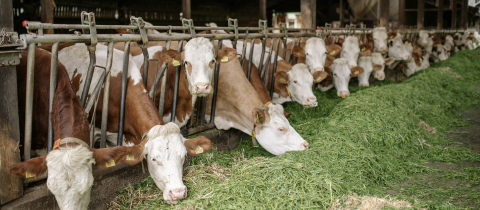The Food and Drug Administration in the U.S. has recently put out an advisory about the overuse of antibiotics in animals and is asking for voluntary compliance in limiting the use of these important drugs to treating disease in animals and eliminating their use for “production” purposes. Food producers, drug companies and veterinarians are being asked to cooperate in making the changes in the way antibiotics are used in animals, but the FDA has stated that if voluntary action is not forthcoming, legal restrictions such as those already in place in Europe, will be instituted. That, however, is likely to be a messy business with back and forth court actions. Hopefully, with the realization of the serious stakes involved, producers and antibiotic manufacturers will comply with the request to alter the way that antibiotics are used in animals both in the U.S. and in Canada.
While it has long been known that low dose antibiotics cause weight gain in animals, the mechanism by which they do this has been a mystery. Researchers are now beginning to zero in on the effect and their work may even shed light on the human obesity epidemic. Animals, like humans, have numerous bacterial species living in their gut. Believe it or not, there are more bacterial cells in our body than human cells. Of course, bacterial cells are much smaller than human cells. But their effect on our health may not be small.
Some varieties of bacteria are more likely to cause the body’s immune system to swing into action, but usually different bacteria keep each other’s multiplication rate in check by competing for the same food supply. But if the bacterial balance is upset because an antibiotic reduces the numbers of one species more than others, an inflammatory response can occur. Such a response is linked with making our cells less sensitive to insulin. “Insulin resistance” means that glucose is less likely to be taken up by cells, and since it is the cell’s main source of energy, they crave an increased intake. This translates to a boost in appetite as the body strives to meet cellular needs.
What all of this suggests is that some species of bugs in our intestine may contribute to weight gain more than others, and that these may become more prevalent when competitors are reduced by antibiotics. Of course, other factors may also play a role in altering the bacterial flora. The chlorination of drinking water as well as improved sanitation may influence both the type and the number of microbes that reside in our gut. Who knows, perhaps all that emphasis on getting rid of germs may be affecting our waistline.
Is there any actual evidence for this postulated link between changes in gut bacteria and obesity? In one word, yes. When Martin Blaser, a microbiologist at New York university, fed infant mice doses of penicillin comparable to those given farm animals, he found that after 30 weeks these mice had put on 10-15% more weight than those not treated with the antibiotic. Furthermore, the mice that had been treated had a different microbial flora in their gut, with Lactobacillus, one of the “good” bacteria, having significantly decreased. When gut bacteria from these mice were introduced into mice had been bred in a totally sterile environment, and were therefore germ-free, they put on more weight than mice with the regular complement of microbes in their gut.
But mice are not small humans. So, what about people? Danish researchers who followed the development of some 28,000 babies found that exposure to antibiotics within the first six months of life increased the chance of the children being overweight by the time they reached the age of seven. Conceivably, the effect of antibiotics on weight gain may even be passed down to offspring. Babies acquire bacteria as they pass through the birth canal, and if the mother had been treated with antibiotics as an infant, her weight gain-prone bacterial flora may be passed on to the baby, who then is predisposed to obesity.
While overconsumption of food is the crux of the obesity problem, one of the reasons why we eat too much, as we have now seen, may be due to the changes that have occurred in the microbial population of our gut. A study of ancient feces from caves, as well as from the intestinal tract of mummies, has revealed a microbial makeup that is quite different from that found in our guts today. Those ancient microbial populations are more similar to the ones found in chimps, gorillas and children in rural Africa than in the intestines of North Americans who are more likely to have been exposed to chlorinated water, antimicrobial cleaning agents and antibiotics. Maybe a partial answer to obesity is to repopulate our intestines with the bacteria found in ancient poop. Can a diet that aims to woo with poo be far off?
Want to comment on this article? Visit our FB Page!







